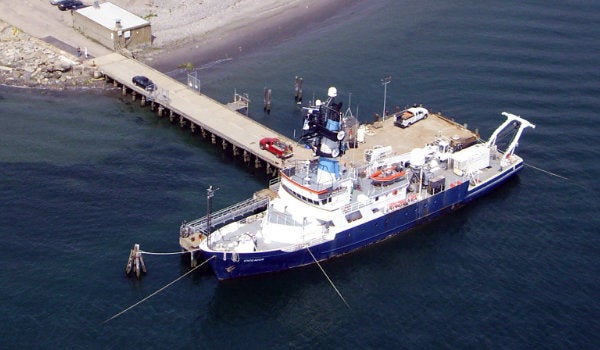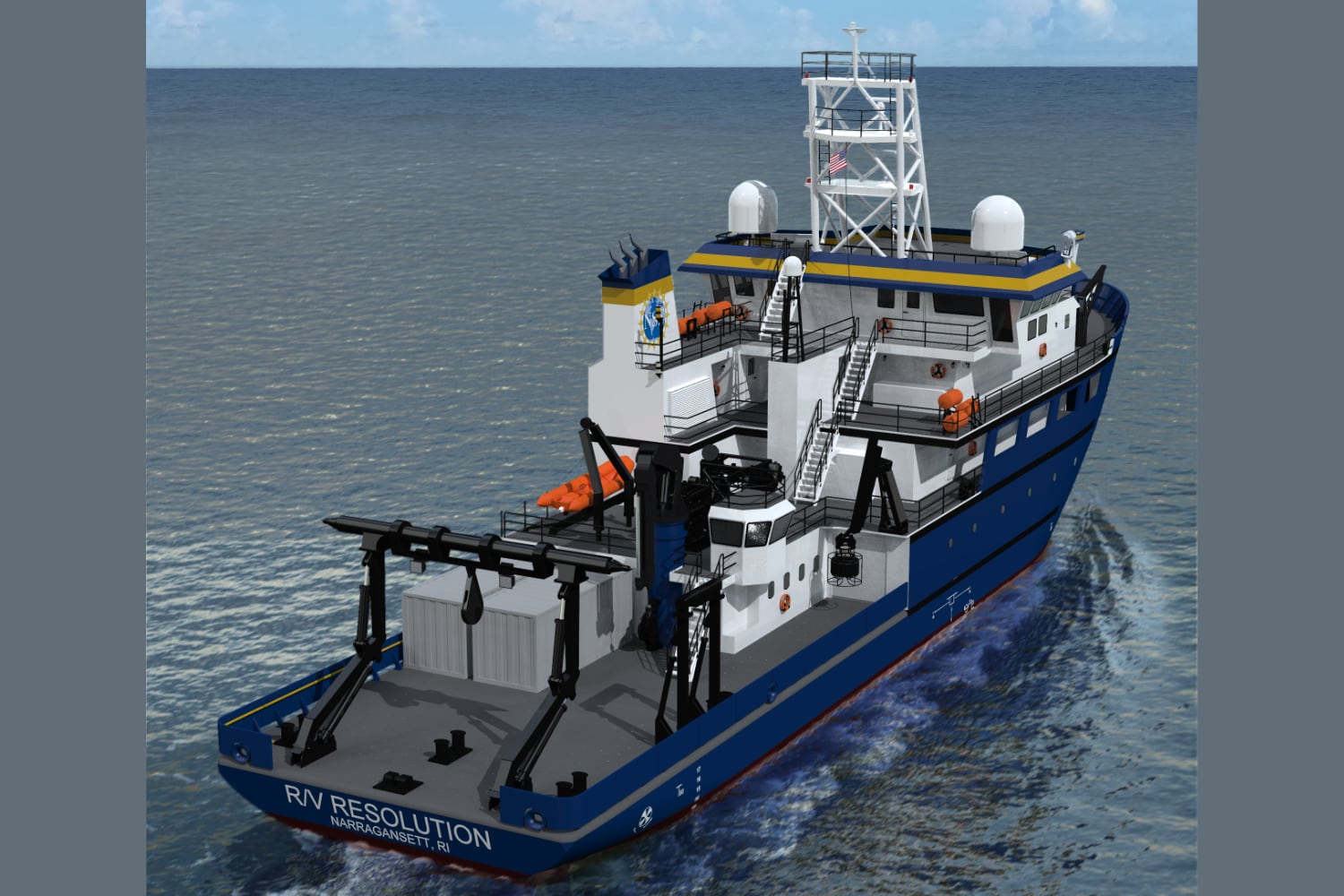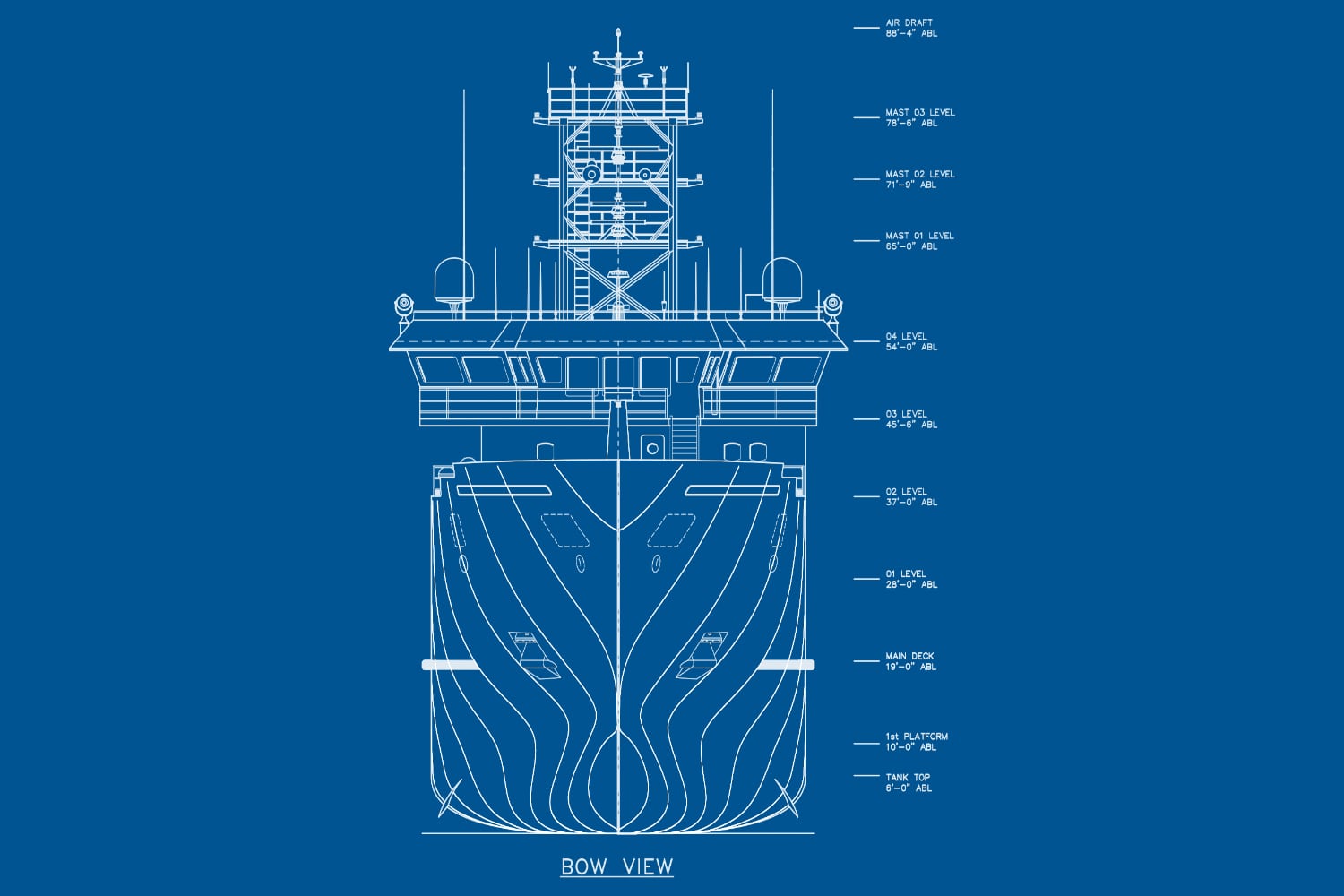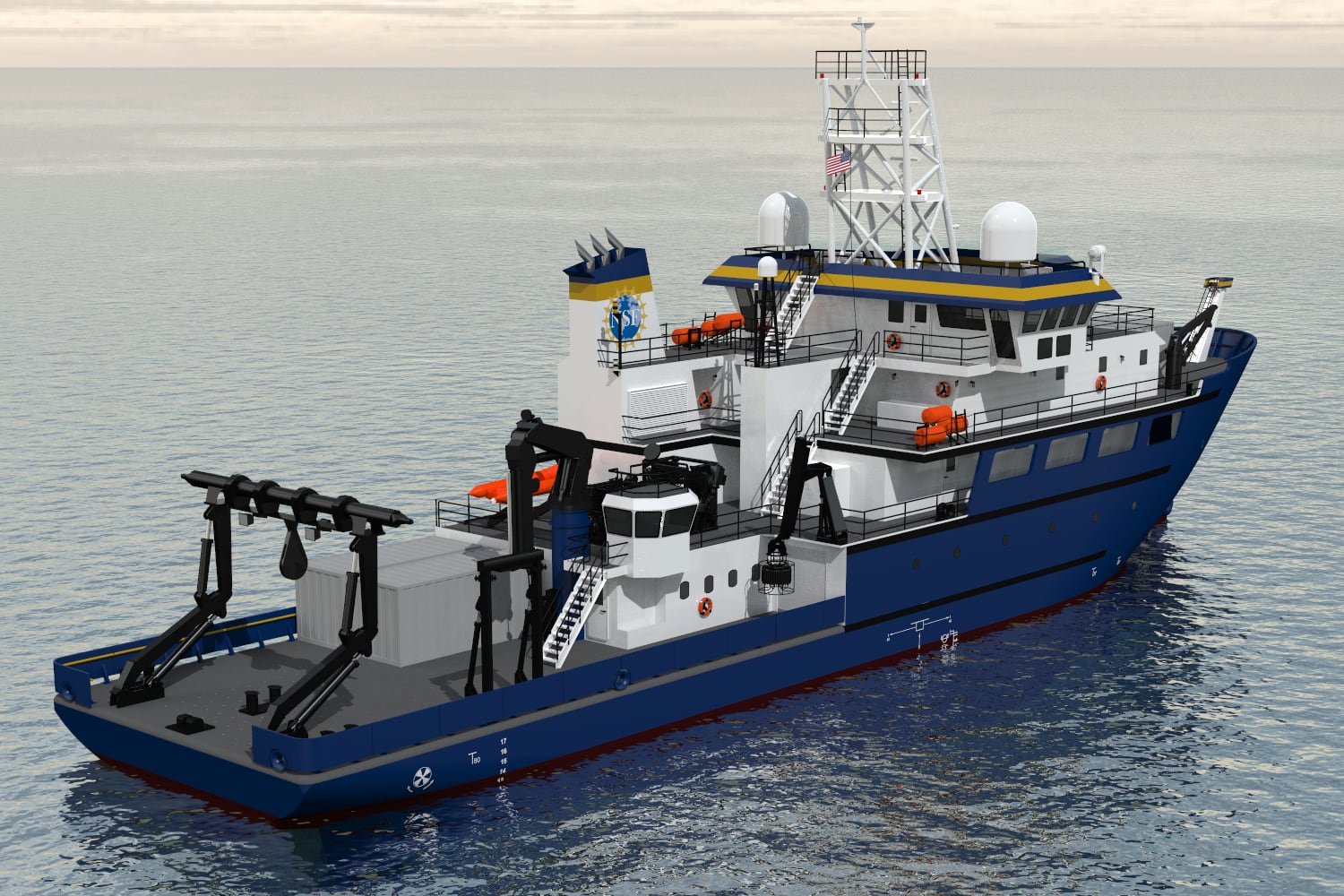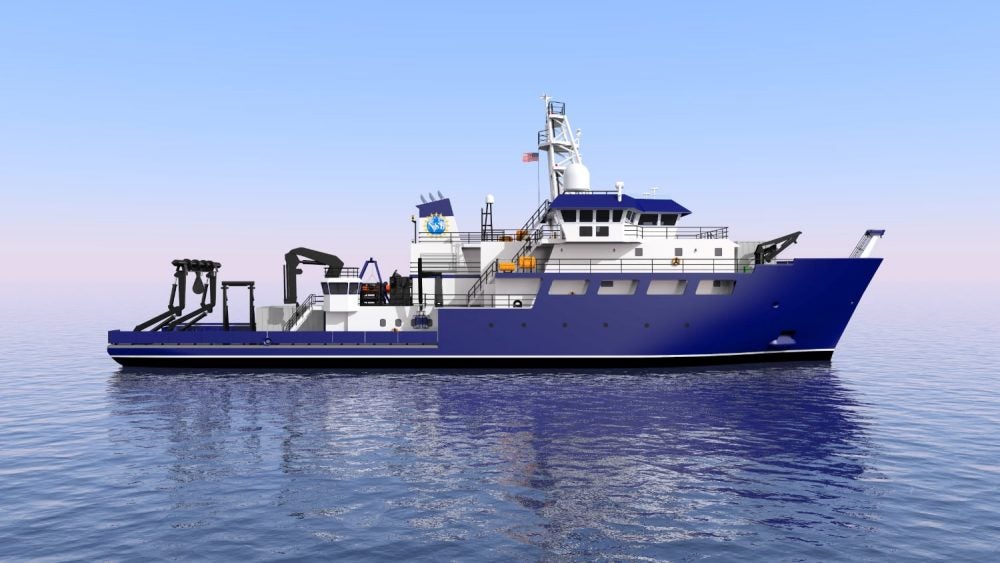
An artist’s rendering of the new Regional Class Research Vessel to be operated by URI’s Graduate School of Oceanography and home-ported at the University’s Narragansett Bay Campus.
$125 million vessel to be delivered in 2021.
The National Science Foundation (NSF) has selected the East Coast Oceanographic Consortium, led by the University of Rhode Island’s Graduate School of Oceanography, to operate a new oceanographic research ship, one of only three such vessels in the nation.
Owned by NSF and valued at over $125 million, the Regional Class Research Vessel will be constructed in Louisiana, delivered to Rhode Island in 2021 and home-ported at URI’s Narragansett Bay Campus.
“This significant investment in the nation’s scientific research recognizes URI’s half-century of leadership in the field of oceanography and its long-standing and fruitful collaborations with partner institutions,” said URI President David M. Dooley. “No doubt the new vessel will help researchers, educators, students and the public gain a richer understanding of our planet and stimulate exploration that will lead to discoveries we can’t yet imagine.”
“This is tremendous news for the Consortium members, URI, and the state of Rhode Island,” said Bruce Corliss, dean of the Graduate School of Oceanography. “This new ship and our consortium will provide cutting edge technology and exciting new opportunities for research, education and outreach in ocean science and exploration.”
Continuing URI’s half century of ocean-going research, the new vessel will support such scientific studies as the tracking of ocean currents and fish migration, seafloor surveys in earth-quake prone regions of the world, conservation of marine mammals or the food-web dynamics in the deep ocean. In addition, the ship will offer educational opportunities to teachers and students from high school through the graduate level, as well as outreach to the general public.
The new ship will be 199 feet long and 41 feet wide and will feature improved science labs, more workspace, state-of-the-art technologies, and more comfortable berthing. The ship will be able to cruise at 11.5 knots for up to 21 days. It will also include a dynamic positioning system that enables ships to remain in one exact spot for long periods and will allow operation of remote operated vehicles. The ship will carry a crew of 13 and up to 16 scientists and have a cruising range of 5,400 nautical miles.
Regional Class Research Vessels conduct operations in the coastal ocean ranging from near-shore environments to the outer continental rise, as well as the open ocean. The vessel’s endurance, draft, ice classification and science mission equipment are tailored for essential science throughout the Atlantic Ocean and adjoining seas.
NSF and other federal sponsors, including NOAA and the Office of Naval Research, are likely to continue annual funding of approximately $5 million to URI to operate the vessel. These funds support the cost of operating a research vessel, which include crew, food, fuel, planned maintenance, safety training, and science logistics. Scheduling will be coordinated through the University-National Oceanographic Laboratory System.
The URI vessel will replace R/V Endeavor, a 185-foot ship that URI has operated for more than 40 years and is nearing the end of its useful life. Endeavor traveled more than one million nautical miles from the Arctic to the South Pacific and nearly everywhere in between while conducting more than 600 research expeditions.
“As a floating laboratory and classroom, Endeavor has been a tremendous facility for the University and for the state and has raised URI and GSO’s profile internationally,” said Corliss. “Endeavor has made important contributions to the state’s economy, and the work conducted aboard the ship has advanced our understanding of oceanographic processes. We are pleased to continue this legacy over the next 40 years with the new vessel.”

